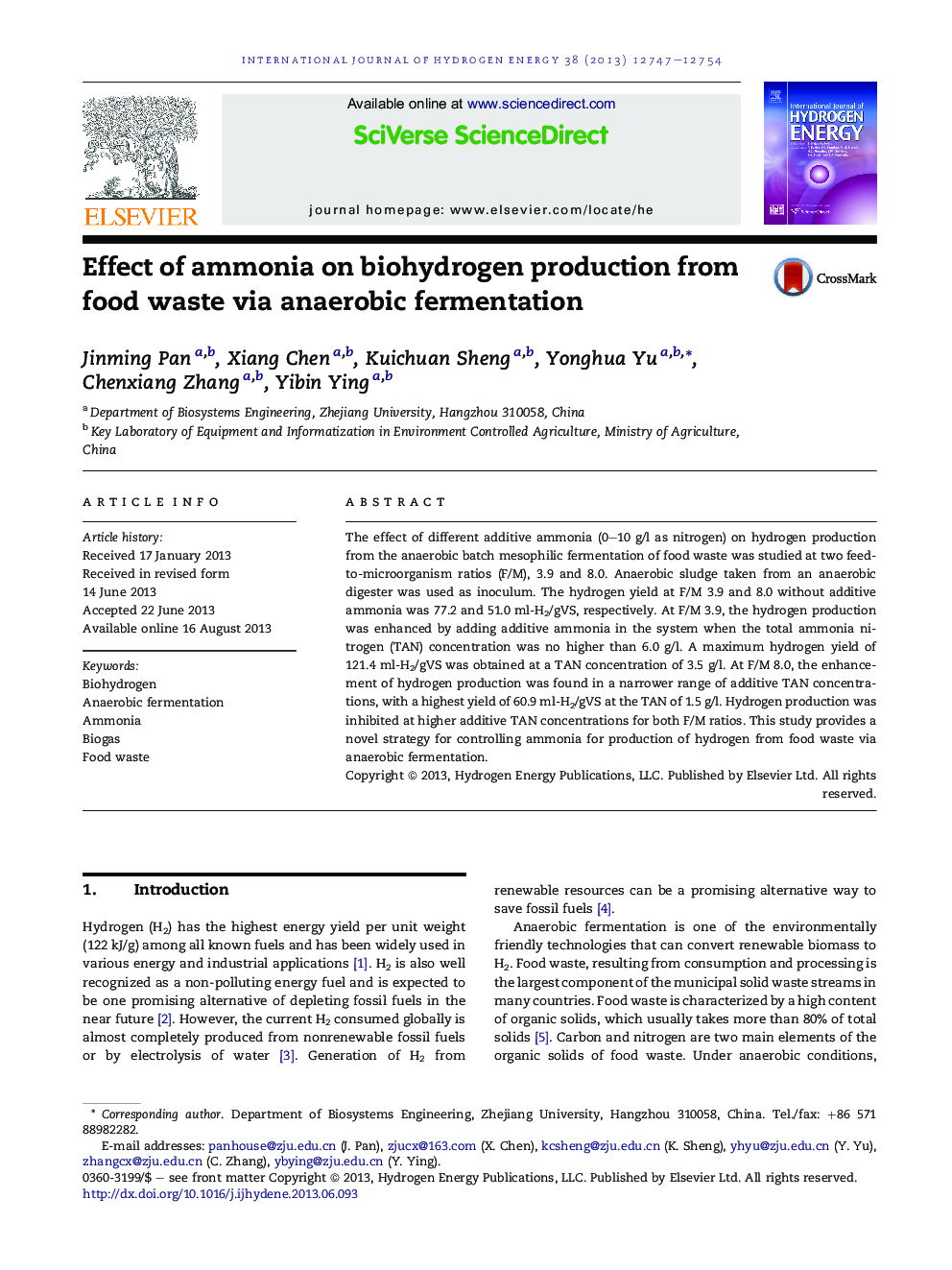| Article ID | Journal | Published Year | Pages | File Type |
|---|---|---|---|---|
| 7721426 | International Journal of Hydrogen Energy | 2013 | 8 Pages |
Abstract
The effect of different additive ammonia (0-10Â g/l as nitrogen) on hydrogen production from the anaerobic batch mesophilic fermentation of food waste was studied at two feed-to-microorganism ratios (F/M), 3.9 and 8.0. Anaerobic sludge taken from an anaerobic digester was used as inoculum. The hydrogen yield at F/M 3.9 and 8.0 without additive ammonia was 77.2 and 51.0Â ml-H2/gVS, respectively. At F/M 3.9, the hydrogen production was enhanced by adding additive ammonia in the system when the total ammonia nitrogen (TAN) concentration was no higher than 6.0Â g/l. A maximum hydrogen yield of 121.4Â ml-H2/gVS was obtained at a TAN concentration of 3.5Â g/l. At F/M 8.0, the enhancement of hydrogen production was found in a narrower range of additive TAN concentrations, with a highest yield of 60.9Â ml-H2/gVS at the TAN of 1.5Â g/l. Hydrogen production was inhibited at higher additive TAN concentrations for both F/M ratios. This study provides a novel strategy for controlling ammonia for production of hydrogen from food waste via anaerobic fermentation.
Related Topics
Physical Sciences and Engineering
Chemistry
Electrochemistry
Authors
Jinming Pan, Xiang Chen, Kuichuan Sheng, Yonghua Yu, Chenxiang Zhang, Yibin Ying,
